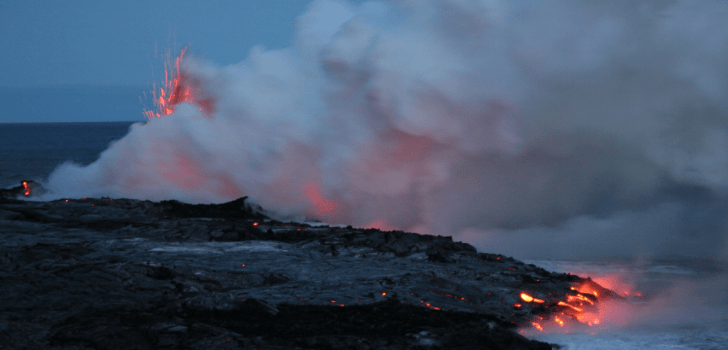The lake of lava at Hawaii’s Kilauea volcano has been rising over the past week and, sometimes, overflowing in a spectacular show.
Janet Babb, a lead geologist with the U.S. Geological Survey Hawaiian Volcano Observatory, said Thursday that it is the first time lava has come into view from the public platform within Hawaii Volcanoes National Park on Hawaii’s Big Island.
“It’s always been out of view for visitors who were in the park public viewing areas,” she said.
But this week, because of lava rising inside the volcano, the lava lake rose high enough that it was visible.
The last time red-hot lava was visible in the crater was in 1982. The last time there was a lake of lava was in 1974.
The vent within the Halemaumau Crater opened in March, 2008 and has been rising and falling ever since. Even at its previous highest level, the lake was too low for people to see. During the day people could just make out the gas rising from the lake, and at night people could see the orange glow from the lava but nobody could see it directly.
But in the early 1800s right up until 1924, there was a continuous lake of lava at Kilauea summit within Halemaumau. At the time, the crater was approximately half the diameter of what it is now.
A huge eruption in 1924, which occurred inside the volcano, doubled the size of the crater.
Since 1924, lava lakes have occurred at various times. For instance in 1967 and 1968 the entire crater was filled with molten lava. You can still make out a “bathtub ring” on the walls of the crater where the lava had risen to at that time.
But you have to act fast if you want to see the show. As of Thursday morning, the lava was beginning to recede, part of its natural ebb and flow.
Stay Connected